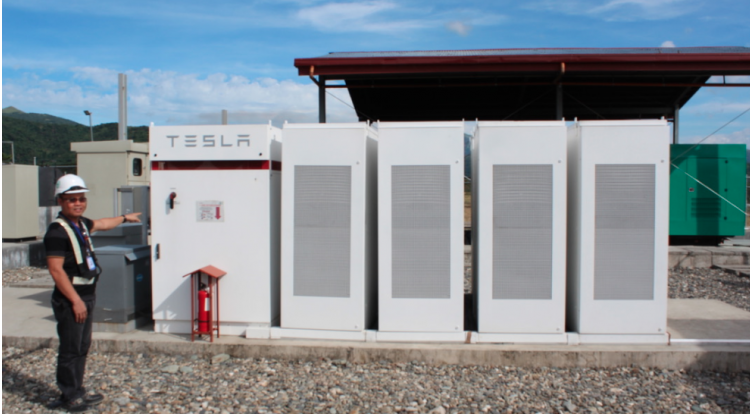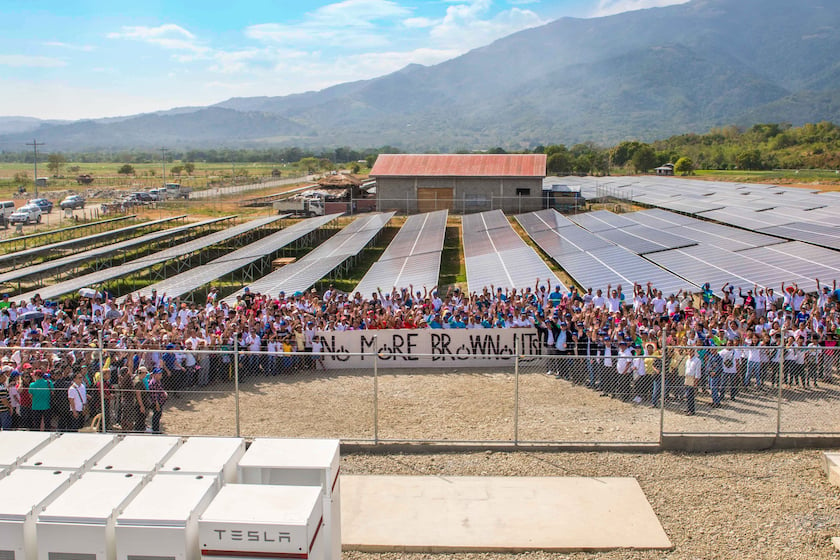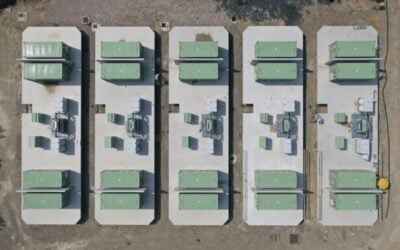
Questions around who should own, operate and ultimately benefit from the deployment of energy storage systems could soon be resolved in the Philippines after the government Department of Energy (DoE) issued a set of draft guidelines.
In order to accommodate energy storage as an enabler for the modernisation of its electricity networks, the Philippines’ Department of Energy (DoE) has issued a circular, “Providing a framework for energy storage system [sic] in the electric power industry”, this week.
Issuing the draft on 1 April and now seeking public comments only until 5 April 2019, the department has nonetheless attempted to take on some of the biggest questions facing electricity system planners, operators, generators and service suppliers alike. The DOE has already held four events to address policy gaps in the document with stakeholders and further events featuring public consultations.
Internationally, the department said, energy storage systems are in use for a variety of applications relating to the transmission, distribution and generation of energy. Domestically however, various stakeholders have raised concerns that there is a “lack of governing policy framework for its regulation and operation”.
Try Premium for just $1
- Full premium access for the first month at only $1
- Converts to an annual rate after 30 days unless cancelled
- Cancel anytime during the trial period
Premium Benefits
- Expert industry analysis and interviews
- Digital access to PV Tech Power journal
- Exclusive event discounts
Or get the full Premium subscription right away
Or continue reading this article for free
The department recognised specific problems in the Philippines including load dropping on the Visayas Grid due to the addition of variable renewable energy sources, highlighting that ESS could stabilise that network. It also acknowledged environmental concerns over ESS system deployment, noting that the “ESS proponent” is to take responsibility for proper disposal and recycling of facilities and components.
Who could own and operate ESS
The DOE is putting together a Smart Grid Roadmap in respect of modernising the national electric system. ESS will be one of the “key elements” of that:
“The DOE recognizes the applications and the benefits of ESS as an emerging technology in the improvement of the electric power system in accordance to the objective of ensuring the quality, reliability, security and affordability of the supply of electric power,” the circular reads.
Generation companies may own energy storage systems, either as standalone facilities or integrated into existing generation. ESS systems may then be registered to participate in the wholesale electricity spot market (WESM).
Distribution utilities may “develop or enhance appropriate business procedures for the connection of ESS to its distribution network”, consistent with applicable guidelines, while making sure the operation of systems is also in line with the rules. Distribution utilities will also need to ensure the coordination of ESS into the WESM with the transmission system and market operating entities.
In addition to also ensuring fair charges are levied for use of their networks, distribution companies will need to report back each month on the operation of ESS in their franchise area and notify the transmission network of new large-scale systems that have applied for grid connection.
So-called directly connected customers on the grid, meaning large businesses and commercial and industrial (C&I) facilities, may also own and operate ESS, subject to local permits and other conditions. C&I users must also provide technical information to the transmission network about their installed systems.
End-users are also to be allowed to own and operate their own energy storage systems but conversely are asked to notify distribution companies if doing so. Qualified third parties, such as providers of government microgram programmes, may also own and operate ESS, if used in conjunction with renewable energy facilities or hybrid power systems deployed for household use.
The System Operator (SO), on the other hand, will not own and operate energy storage systems. The Market Operator (MO) must comply with incorporating ESS into its WESM and asses the technology’s impact on market operations.

Multiple ESS technologies and applications recognised
The government recognised that ESS could include battery energy storage systems (BESS), compressed-air energy storage (CAES), flywheel or pumped hydro, as well as other technologies still to emerge on the market.
As an island country with relatively high solar irradiance but also susceptible to storms and hurricanes and a mixture of urban, industrial with remote and rural energy demand across those islands, the circumstances of the Philippines mean that both microgrids and large grid-connected batteries have already been built or proposed in the country.
The DOE circular highlighted a number of potential applications for storage, including grid-connected front-of-meter benefits such as ancillary services and transmission/distribution investment deferral, transmission congestion relief. As well as behind-the-meter integration of renewable energy sources, there is also a separate application category for microgrids.
The draft also highlighted licensing and permitting, connection and operational requirements, and frameworks for market participation and registration. The document remains open for comment until 5 April 2019.





